FIND COMPOSITION OF TWO FUNCTIONS
Subscribe to our ▶️ YouTube channel 🔴 for the latest videos, updates, and tips.
The composition of a function g with a function f is :
h(x) = g(f (x))
The domain of h is the set of all x-values such that x is in the domain of f and f (x) is in the domain of g.
Composition of function can be done in the following situations.
- Find composition from the given functions.
- Evaluating composition from the table of values.
- Find composition from the graph.
- Finding composition of function from three functions
Composition of Two Composition
Problem 1 :
f(x) = -9x + 3 and g(x) = x4, find (f ∘ g)(x)
Solution :
(f ∘ g)(x) = f(g(x))
The function g(x) is input of the function f(x).
= f(x4)
= -9(x4) + 3
(f ∘ g)(x) = -9x4 + 3
Composition of Function From Graph
Problem 2 :
Use the graph of f(x) and g(x) to find the composition of functions.
f(g(2))
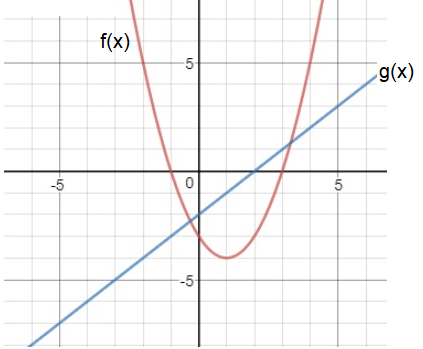
Solution:
f(g(2))
From the graphs given above, it is clear that the line at x = 2 is crossing the curve g(x) at the point 0.
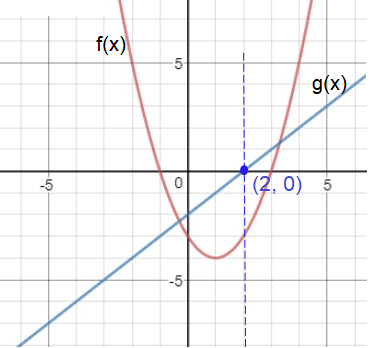
The value of g(2) is 0.
f(g(2)) = f(0)

When x = 0, the vertical line crosses the curve f(x) at -3.
f(g(2)) = -3
Composition from Table
Problem 3 :
Use the table of values to evaluate each expression
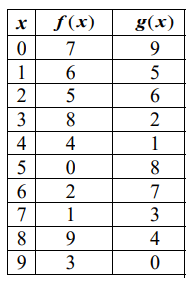
1) f ( g(8) ) 2) f( g(5) ) 3) g ( f (5) )
Solution :
1) f ( g(8) )
From the table, value of g(8) is 4.
f ( g(8) ) = f(4)
= 4
2) f ( g(5) )
From the table, value of g(5) is 8.
f ( g(5) ) = f(8)
= 9
3) g ( f (5) )
From the table, value of f(5) is 0.
g ( f(5) ) = f(0)
= 7
Composition from Arrow Diagram
Problem 1 :
The arrow diagrams defines the functions
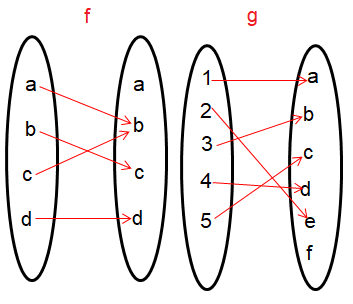
Find f∘f
i) f∘f :
Solution :
|
Input is a : f∘f (a) = f [f(a)] = f[b] = c So, (a, c) |
Input is b : f∘f (b) = f [f(b)] = f[c] = b So, (b, b) |
|
Input is c : f∘f (c) = f [f(c)] = f[b] = c So, (c, c) |
Input is d : f∘f (d) = f [f(d)] = f[d] = d So, (d, d) |
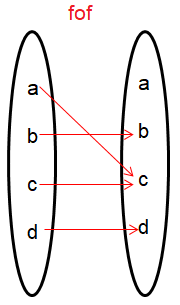
Composition of Three Functions
Given f(x) = -2x + 1, g(x) = x2, and h(x) = -1/2x + 1/2, evaluate the following:
Problem 4 :
Given f(x) = -2x + 1, find f(-6)
Solution:
f(x) = -2x + 1
f(-6) = -2(-6) + 1
= 12 + 1
f(-6) = 13
Subscribe to our ▶️ YouTube channel 🔴 for the latest videos, updates, and tips.
Recent Articles
-
Finding Range of Values Inequality Problems
May 21, 24 08:51 PM
Finding Range of Values Inequality Problems -
Solving Two Step Inequality Word Problems
May 21, 24 08:51 AM
Solving Two Step Inequality Word Problems -
Exponential Function Context and Data Modeling
May 20, 24 10:45 PM
Exponential Function Context and Data Modeling